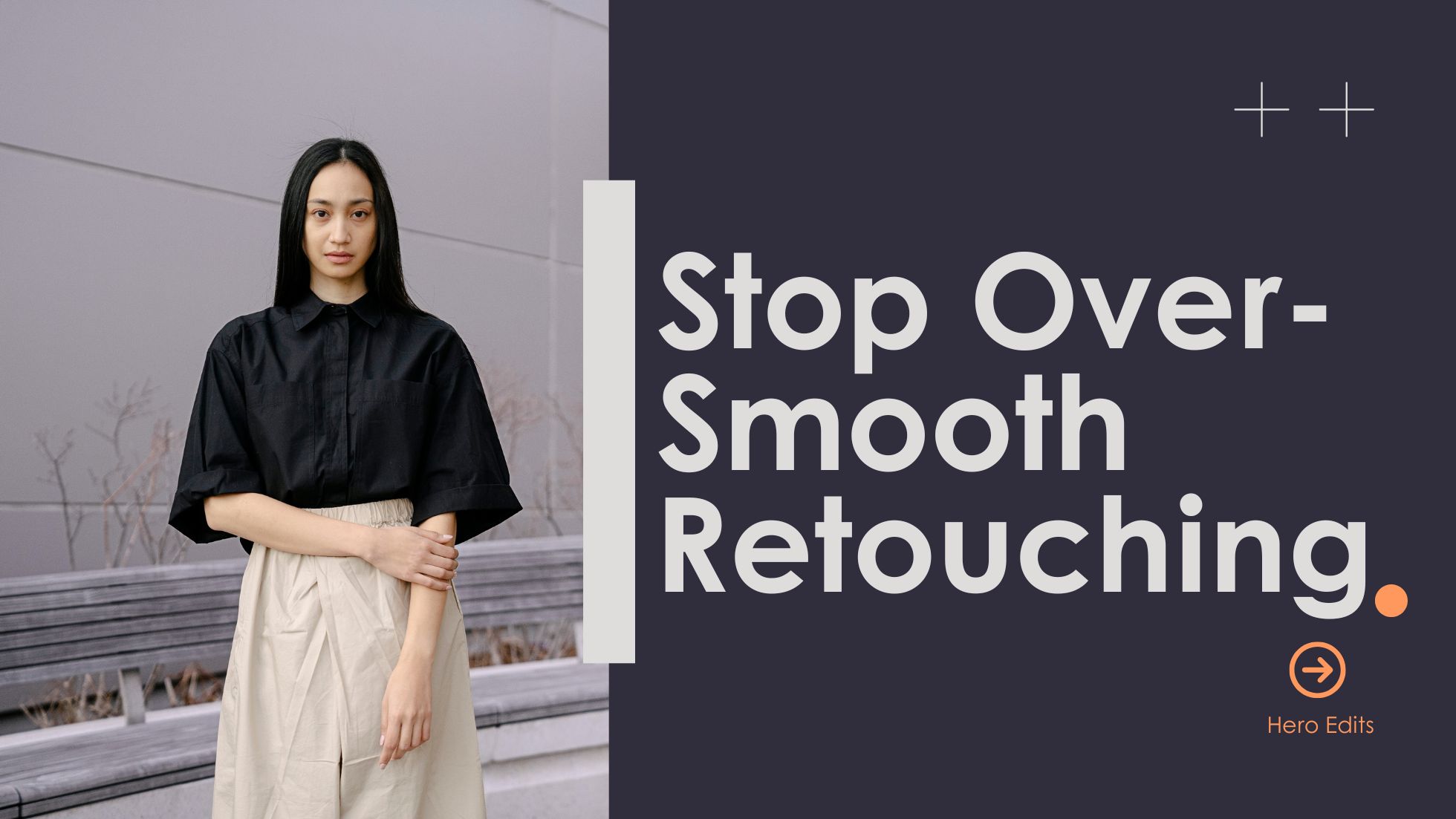Why Do Some Images Lose Texture After Retouching?
November 18, 2025

Maintaining natural skin and fabric texture is the number one challenge in modern e-commerce post-production.
If you’ve ever received retouched images that look blurry, plastic, or unnaturally smooth, you’ve experienced a common industry problem: texture loss.
It happens across fashion, apparel, beauty, and even product photography — and it often pushes brands to switch retouching vendors. But why does texture actually disappear, and more importantly, how can you prevent it?
Let’s break it down.
1. Overuse of Blur-Based Tools
Many junior retouchers rely on tools like Gaussian Blur, Surface Blur, or basic smoothing brushes.
While fast, these tools flatten important details such as:
- Skin pores
- Fabric weave
- Knit patterns
- Cotton grain
- Leather texture
- Lace details
This creates the dreaded “plastic look” — a major red flag for premium fashion brands.
Correct Approach:
High-end retouching requires frequency separation, dodge & burn, or hybrid techniques to clean imperfections without flattening texture.
2. Incorrect Frequency Separation Technique
Frequency separation is powerful, but when used incorrectly, it destroys detail.
The most common mistakes include:
- Using a blur radius that is too high
- Over-smoothing mid-tones
- Retouching on the wrong layer
- Failing to preserve high-frequency details
This results in images that appear:
- Smudged
- Washed-out
- Unnatural
- “AI-like” blur
Correct Approach:
Expert retouchers maintain a balance: cleaning the low-frequency colour layer while protecting the high-frequency texture layer.
3. Heavy Noise Reduction
Some retouchers apply aggressive noise reduction to create a “cleaner” look, but this wipes out micro-texture.
It removes the natural “feel” of materials such as:
- Denim grain
- Silk shimmer
- Wool fibres
- Linen wrinkles
- Leather texture
Correct Approach:
Noise reduction should be used subtly or masked only on problem areas.
4. Low-Quality Source Files
If images are underexposed, shot at high ISO, or compressed, retouchers may struggle to rescue texture.
Problems that cause texture loss include:
- Low-resolution uploads
- JPEG compression artifacts
- Upscaled images
- Motion blur during the shoot
Correct Approach:
Provide RAW or high-resolution TIFF files when possible.
A good retouching team preserves texture even in challenging files — but poor input leads to poor output.
5. Lack of Product Knowledge
Retouchers who do not understand fabric behaviour often “clean” areas that should not be cleaned.
For example:
- Removing natural texture from wool jumpers
- Over-smoothing cotton t-shirts
- Flattening denim
- Removing knitted patterns
- Killing natural shine from silk or satin
Fashion brands need specialist retouchers who know the difference between fabric types and how they should realistically appear.
6. Vendor Prioritising Speed Over Quality
This is one of the biggest pain points for apparel brands.
Cheap retouching vendors often:
- Overuse automated actions
- Use shortcuts to meet deadlines
- Skip manual detailing
- Deliver files that are “clean” but lifeless
Texture disappears because the workflow is focused on quantity, not quality.
Correct Approach:
A dedicated team (like HeroEdits) manually retouches every file, maintaining consistency across your entire product line.
How HeroEdits Preserves Natural Texture
At HeroEdits, texture preservation is our signature strength.
We follow a detail-oriented process:
✔ Manual high-end retouching (no blur shortcuts)
✔ Accurate fabric texture protection (denim, wool, knit, silk, leather, lace, etc.)
✔ Natural skin workflow with dodge & burn
✔ Colour accuracy and product authenticity
✔ Fully calibrated monitors for consistent output
✔ Multiple rounds of QC before delivery
Our goal is simple:
Your product should look real, premium, and exactly the way customers will receive it.
Final Thoughts
Texture loss is not just a small retouching mistake — it affects:
- Brand perception
- Product authenticity
- Conversion rates
- Customer trust
- Return rates in e-commerce
If you’re struggling with your current vendor, it may be time to switch to a team that truly understands the science of texture.

 English
English
 Deutsch
Deutsch
%401x.svg)
